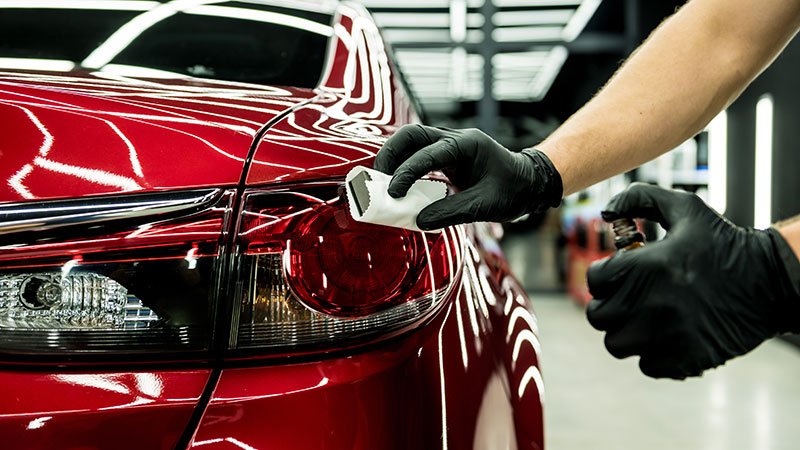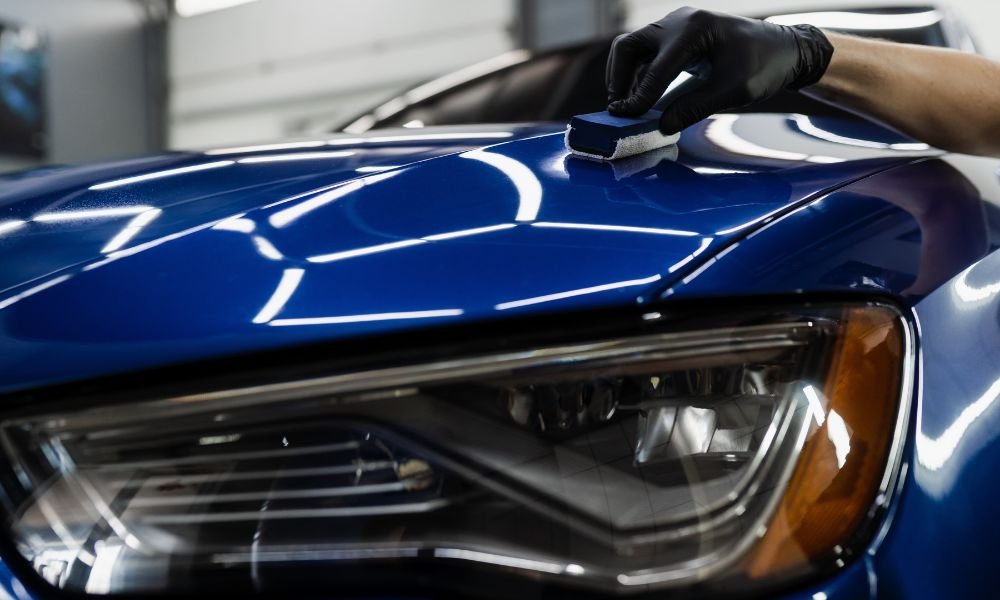How Ceramic Coating Philadelphia Saves Money And Time on Upkeep
How Ceramic Coating Philadelphia Saves Money And Time on Upkeep
Blog Article
Why Ceramic Coating Is the Ultimate Solution for a Remarkable End Up
Ceramic covering has actually become a leading remedy for those looking for a flawless coating for their vehicles, thanks to its amazing longevity and protective attributes. This sophisticated liquid polymer not just bonds seamlessly with factory paint yet additionally offers an awesome barrier versus usual hazards such as scrapes, UV rays, and toxic wastes. Additionally, its hydrophobic residential or commercial properties simplify maintenance while boosting aesthetic allure. Nevertheless, recognizing just how this technology contrasts to traditional approaches and discovering its application nuances can expose also more about its worth. What variables genuinely established ceramic covering apart?
What Is Ceramic Finishing?

When applied correctly, ceramic layer develops a hydrophobic surface area that fends off water and dirt, making it less complicated to cleanse and keep. Unlike typical waxes or sealants, which commonly offer short-lived protection, ceramic finishings can last for several years, relying on the product top quality and application technique. The process of applying ceramic covering calls for careful preparation, including detailed cleaning and occasionally paint correction, to make certain optimal bonding and performance.
Ceramic finishings are not limited to automotive surface areas; they can likewise be utilized on various products, including glass, metal, and plastics, giving a functional solution for enhancing defense. Generally, ceramic finishing stands for a significant innovation in surface security technology, integrating both visual and functional advantages for a variety of applications.
Advantages of Ceramic Finish
While numerous surface area protection choices exist, the advantages of ceramic finishing stick out as a result of its distinct buildings and lasting performance. One of the primary benefits is its exceptional sturdiness. Ceramic Coating Philadelphia. Unlike traditional wax or sealants that need constant reapplication, ceramic coverings offer a resistant layer that can last for several years, significantly minimizing maintenance efforts
Another significant advantage is boosted protection versus environmental impurities. Ceramic finishes create a hydrophobic surface area that pushes back water, dirt, and various contaminants, making it easier to clean. This function not only maintains the car's appearance but likewise lessens the danger of rust and oxidation, especially in severe weather.
In addition, ceramic finishes provide exceptional resistance to UV rays, avoiding fading and degradation of paint with time. This UV security is crucial for preserving the aesthetic worth of lorries and surface areas subjected to route sunshine.
In addition, the glossy surface accomplished with ceramic coating enhances the total aesthetic appeal, offering surfaces a showroom-quality sparkle. In general, ceramic coverings stand for a substantial advancement in surface area security innovation, supplying enduring advantages that provide to both practical and aesthetic needs.
Just How It Functions
Comprehending the science behind ceramic finishes discloses just how they provide such remarkable security and durability. At its core, a ceramic layer is a fluid polymer that chemically bonds with the car's manufacturing facility paint. This bonding produces a protective layer that is both hydrophobic and oleophobic, repelling water, dust, and oil. The key element of most ceramic coatings is silicon dioxide (SiO2), which is stemmed from quartz. This compound adds to the covering's hardness and resistance to scrapes, UV rays, and environmental pollutants.
The application process involves multiple actions, including surface area prep work, which is important to achieving ideal bond. Once applied, the finishing goes through a curing procedure, during which it sets and creates a semi-permanent bond with the paint surface. This bond is what differentiates ceramic finishes from traditional waxes and sealants, providing a longer-lasting protective barrier that can withstand for many years.
In addition, the thickness of the layer can improve its protective top qualities, making sure that it can withstand rough conditions. Eventually, the scientific research of ceramic finishings combines advanced materials with cutting-edge application methods to supply an unparalleled degree of protection and aesthetic enhancement for vehicles.
Comparison With Traditional Approaches
The advantages of ceramic finishings end up being particularly obvious when contrasted to traditional paint defense methods such as waxes and sealers. While waxes use a short-lived shine, normally lasting a few weeks to Get the facts a couple of months, ceramic coverings supply a lasting protective layer that can sustain for several years. This longevity dramatically minimizes the regularity of reapplication, making ceramic coverings an extra cost-efficient option gradually.
In addition, traditional techniques often need extensive prep work and several applications to accomplish a their explanation satisfying level of security. On the other hand, ceramic coverings bond at a molecular level with the vehicle's surface area, developing a robust shield against ecological contaminants like UV rays, acid rainfall, and roadway salts. This bond boosts the lorry's resistance to scratches and swirl marks, which are prevalent with traditional waxes and sealers.
In addition, the hydrophobic residential properties of ceramic finishings ward off water and dirt, causing much easier cleansing and upkeep. In comparison, wax and sealant-treated surface areas can bring in crud, demanding even more regular washing - Ceramic Coating Philadelphia. On the whole, ceramic coatings not only provide exceptional security yet additionally supply a much more long-lasting and visually appealing finish, developing them as the favored option for discerning vehicle owners
Application and Upkeep Tips

Utilizing a foam applicator, use the finishing in tiny areas, complying with the manufacturer's standards regarding thickness and overlap. Permit sufficient curing time in between layers, commonly 24-hour, to make certain correct bonding. After application, it is important to stay clear of exposure to water or extreme components for a minimum of a week to permit the finish to fully cure.
Additionally, utilizing a ceramic upkeep spray can enhance the finish's hydrophobic properties and durability. Regular inspections for any indicators of wear will certainly help preserve the layer's stability and preserve that pristine coating.
Verdict
In final thought, ceramic finishing emerges as an exceptional alternative for attaining a remarkable automobile coating. By creating a durable bond with factory paint, ceramic covering effectively guards against scrapes, UV rays, and environmental contaminants.

Report this page